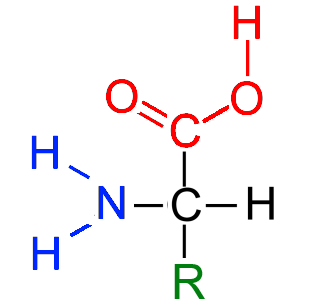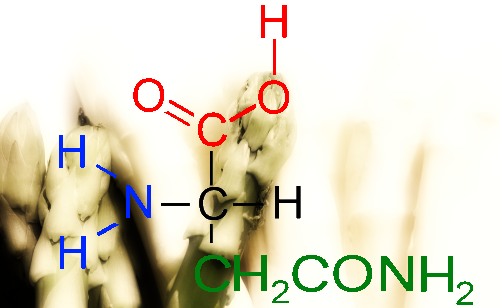






$R$ is a group of atoms characterizing the amino acid

The asparagine (asn) is an amino acid which can be extracted from asparagus. Its $R = CH_2CONH_2$ group contains an amide function
- As polar substances, all amino acids are soluble in water. - As acids (carboxyl group) and bases (amine group), they undergo acid-base equilibria:

(I) is more favored - in a basic medium - if the $R$ group has a basic character (II) is more favored - in an acidic medium - if the $R$ group has an acidic character (III) is more favored - in a neutral environment - if the $R$ group has no acid or basic character The proportions of the forms (1), (2), (3) and (4) may vary significantly depending upon the $pH$ of the medium or the group $R$.
The "central" $C$ atom of amino acids is asymmetric (except glycine with $R = H$) :
 Surprisingly, all the natural amino acids have the L Fischer configuration :
Surprisingly, all the natural amino acids have the L Fischer configuration :
 That does not mean they all have the same R or S configuration :
That does not mean they all have the same R or S configuration :

All living creatures function based on proteins that are amino acid polymers.

- The protein insulin -
(Amino acids are designated by their common abbreviations.)